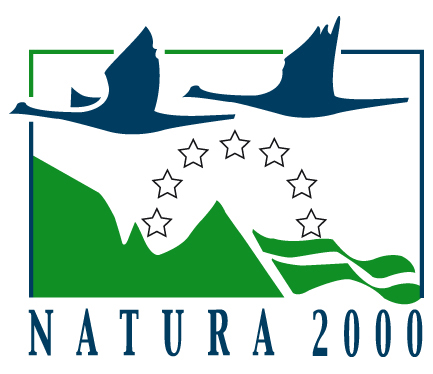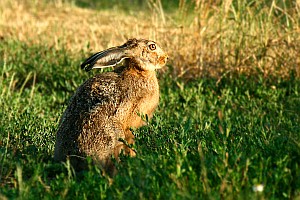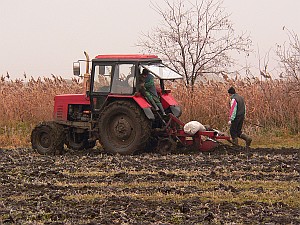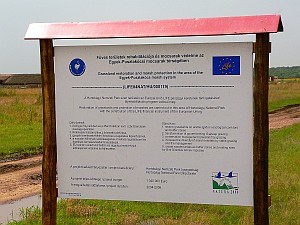 |
Hortobágy National Park |
|
|
Extensive croplands for wildlife To enhance populations of small mammals that are preyed upon by birds of prey (hawks, eagles, kestrels and falcons), we implemented extensive (chemical-free) cultivation on 150 ha of arable lands. These wildlife lands were 100-m-wide stripes sown each year with one of ten different crops. Crops were selected to benefit small mammals. Half of the crops were left standing throughout the winter to provide food and shelter for overwintering. As a result of these activities, the abundance of small mammals increased considerably. When the abundance of the targeted mammal species was compared between extensively and intensively cultivated lands, we found that the abundances of small mammals was sometimes ten times larger in the extensive than in the intensive croplands. The density of small mammals could reach up to 540 individuals per hectare on extensive croplands. We have also observed an increase in the number of birds of prey using the extensive croplands for feeding. |
|
Afforestation Afforestation of some areas was planned for two reasons. First, wooded areas were planned on croplands which were likely to have been covered by forests before the agricultural use of the area started. These areas primarily included those higher-lying loess plateaus which were bordering the ancient floodways. Second, wooded areas were planned to prevent the infiltration of chemicals from remaining croplands to the rehabilitated marshes. Afforestation was carried out in the winter of 2006/2007 by sowing of acorns after the suitable preparation of the soil in six areas on a total of 80 ha. The overwhelming majority of the acorns, however, were dug up and destroyed (eaten) by wild boars that had a large population in the marsh system. The remaining acorns germinated, but the young trees died as a result of the prolonged drought in January-September of 2007. We have also experimented with planting seedlings in two areas, but these also fell victim to the drought of 2007. Thus, all our efforts at afforestation were unsuccessful. The areas where afforestation had been planned were restored to grasslands in the last year of the project (2008). |
||
Raising awareness to the project and grassland conservation We have planned and implemented an information campaign aimed for local stakeholders, conservation professionals and interested laypeople. We produced a brochure in three languages, a booklet and a layman's report in two languages, and a bilingual website. We have organised four 'open days' events in the project area and held one local village forum, where local stakeholders (farmers, land-owners, other interested parties) were informed of the project, the activities and potential areas of cooperation. We also organised one full two-day scientific workshop on grassland conservation with 115 participants and a smaller professional workshop at a conservation conference. The project had excellent links to other LIFE-Nature projects in Hungary and neighbouring countries and with two other European Union-funded projects related to biodiversity. We have installed four information boards at the site, and presented the project and its various results in 9 scientific papers, 14 oral presentations and 7 posters. Four presentations were specifically invited by conference organisers. Finally, as separate activities, we have developed the "Guidelines for the Restoration and Management of Pannonic Steppes" in collaboration with two other Hortobágy LIFE-projects and compiled the "Master Plan for the Long-term Rehabilitation of the Egyek-Pusztakócs Marshes". A full list or deliverable project outputs and downloadable project materials can be found at the Download page. |
||
Monitoring We have established a monitoring system to record the changes following the implementation of the main habitat restoration and management actions. The monitored groups were flowering plants, insects (crickets and grasshoppers, true bugs, spiders, ground beetles), birds and small mammals. Monitoring was designed and carried out based on scientific principles (e.g. sampling theory) based on our belief that the impact of all conservation actions need to be documented carefully and published so that future projects can use the experience. Outputs of the monitoring actions can be found on the Download page. |
||
Land purchase We have purchased 55 ha cropland near three of the most threatened marshes to create ecological corridors and bufferzones. Croplands had been purchased from private landowners at market prices and were restored to grasslands in 2008. We have restored two ecological corridors between marshes and native grasslands, which has reduced the fragmentation of natural habitats. Grassland bufferzones now eliminate the runoff and infiltration of chemicals from remaining croplands into the marsh near Csattag, Bőgő and Kis-Jusztus marshes. We have also purchased 306 ha grasslands near two former goose-farms. The aim of this land-purchase was to eliminate goose-farming from the project area because goose-farming seriously degrades the grasslands. The lands were purchased by 2005 and by 2006, geese were gone from the area. The purchased grasslands are now rented to farmers grazing sheep or cattle, which has started a slow regeneration of the area of the former goose-farms. |
||
Implementation plans We have developed implementation plans for the two restoration actions planned (grassland restoration, afforestation). These plans included a full description of the methods, the locations involved and the scheduling of the activities necessary to carry out the restoration. |

















